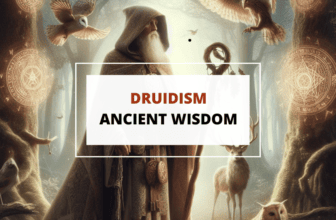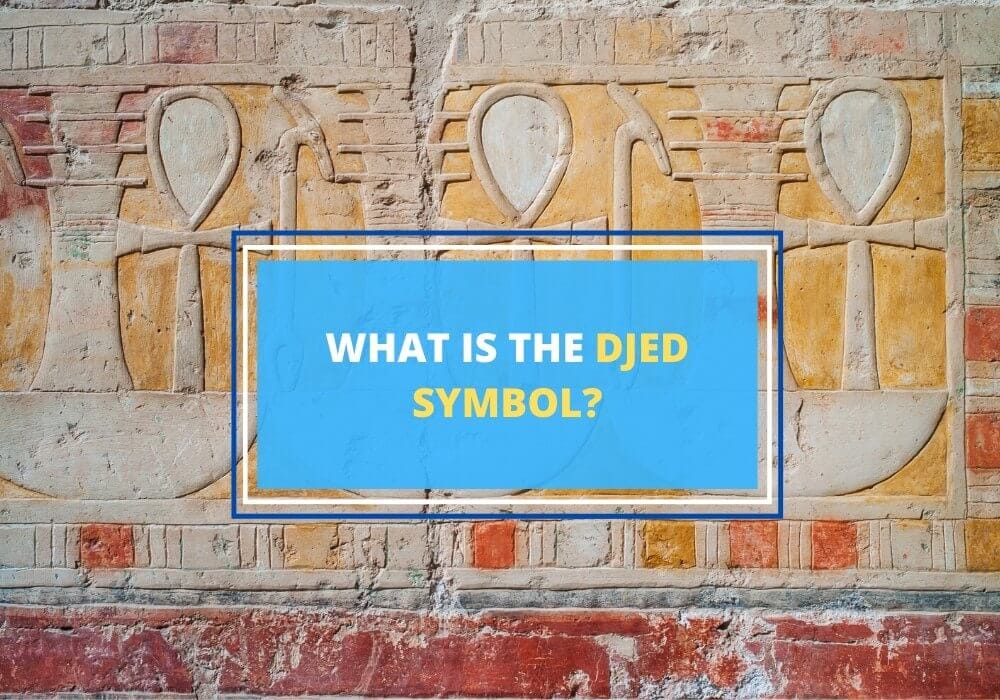
Table of Contents
The Djet pillar symbol, sometimes called the backbone of Osiris, is one of the oldest and most commonly used symbols of ancient Egypt. It’s shaped like a vertical pillar with several horizontal lines at its top.
In the past, the Djed pillar used to be one of the most significant symbols, and held deep meanings. Today, it’s not as popular, compared to other Egyptian symbols like the Eye of Horus or the Ankh. But even so, the Djed remains an important reminder of Egypt’s rich history and its profound understanding of life, death, and rebirth. Let’s take a closer look at the Djed pillar, its history, and symbolism.
What is the Djed? History and Origins

The Djed has been a part of Egyptian mythology and hieroglyphics for as far back in time as we can track – at least 5,000 years and more. It may have originally been developed as part of a fertility cult. Because the pillar shape can also represent a tree, and because of the mythology surrounding the symbol, this hypothesis seems more than likely. In its physical representations, the symbol was likely made as a totem out of reeds and sheaves.
According to psychologist Erich Neumann, the totem was likely a tree fetish at first which is very understandable for a desert-dwelling culture like the ancient Egyptians. The Djet’s evolution into a symbol of stability is also logical from there, as high fertility in vegetation was vital precisely for the stability it brought to the region.
The Djed is also believed to have been associated with the human backbone, itself also a symbol of stability. This also connects the Djed to fertility, as ancient Egyptians believed men’s seed came from the spine.
As an ancient symbol, the Djed also made its way into Egyptian myths. These are what archeologists and historians typically analyze to understand its origins. It was initially used as the symbol of god Ptah who was also called the “Noble Djed”.
The Djed in the Myth of Osiris
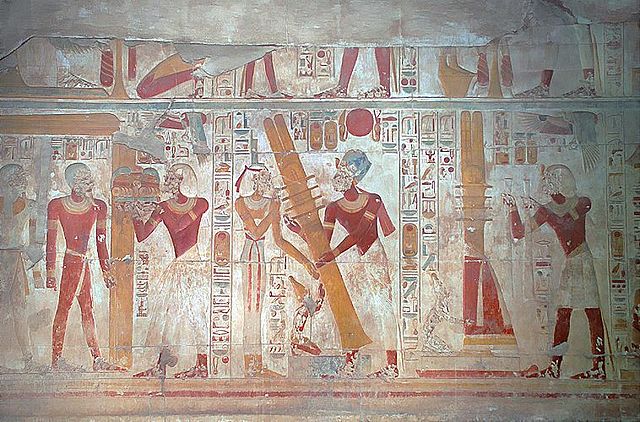
In later Egyptian mythology, the Djed became tied to the Osiris myth. According to this myth, Set killed Osiris by tricking him to lay in a coffin made to perfectly fit him. After Set trapped Osiris in the coffin and the latter died, Set flung the coffin into the Nile. The coffin went into the Mediterranean Sea and washed up on the shores of Lebanon.
As the coffin with Osiris’ body went to ground, a powerful tree grew rapidly out of it, enclosing the coffin within its trunk. Lebanon’s king was intrigued by the tree, so he cut it down, turned it into a pillar, and installed it into his palace with Osiris’ body still inside the pillar.
Years later, as Isis was still searching for the lost Osiris with the help of Anubis, she found out about Osiris’ presence in Lebanon. She came into the favor of the Lebanese king and was granted a boon of her choosing. Naturally, she chose the pillar and her wish was granted. Back in Egypt, Isis extracted the coffin from the pillar, consecrated the tree’s remains, anointed it with myrrh, and wrapped it in linen. That pillar became the Djed.
While this is simply a religious myth, it neatly ties the symbol Djed both to its origins as a tree cult and to its frequent use as a “pillar of stability”.
What Does the Djed Really Mean?
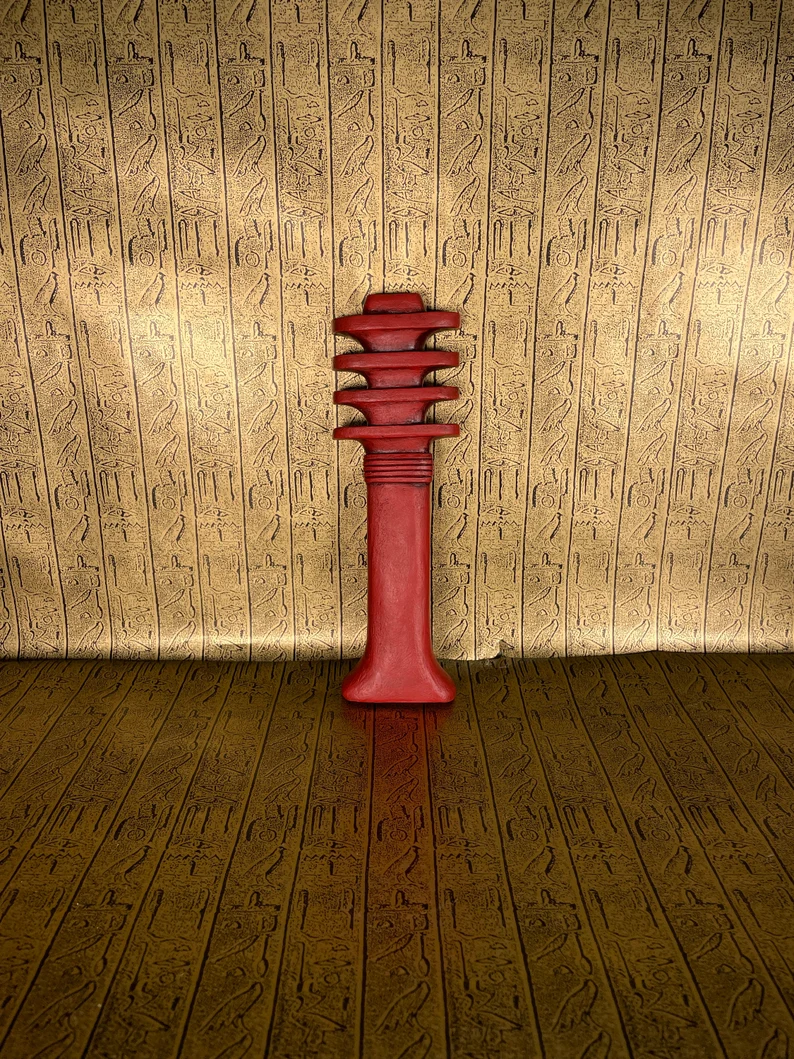
As we’ve already mentioned, the Djed represents stability. In hieroglyphics, the symbol is used both as a symbol of stability, prosperity, and a king’s rule, as well as a symbolic representation of the backbone of the god Osiris. It’s often used together with the symbol tyet which is known as “The Knot of Isis”, often translated as “life” or “welfare”.
As both a stability and a fertility symbol, Djed was also widely used in most ceremonial events. Even during later religious cults in subsequent Egyptian kingdoms, the Djed symbol remained in use due to its universal meaning and ancient origins.
The Djed in Art
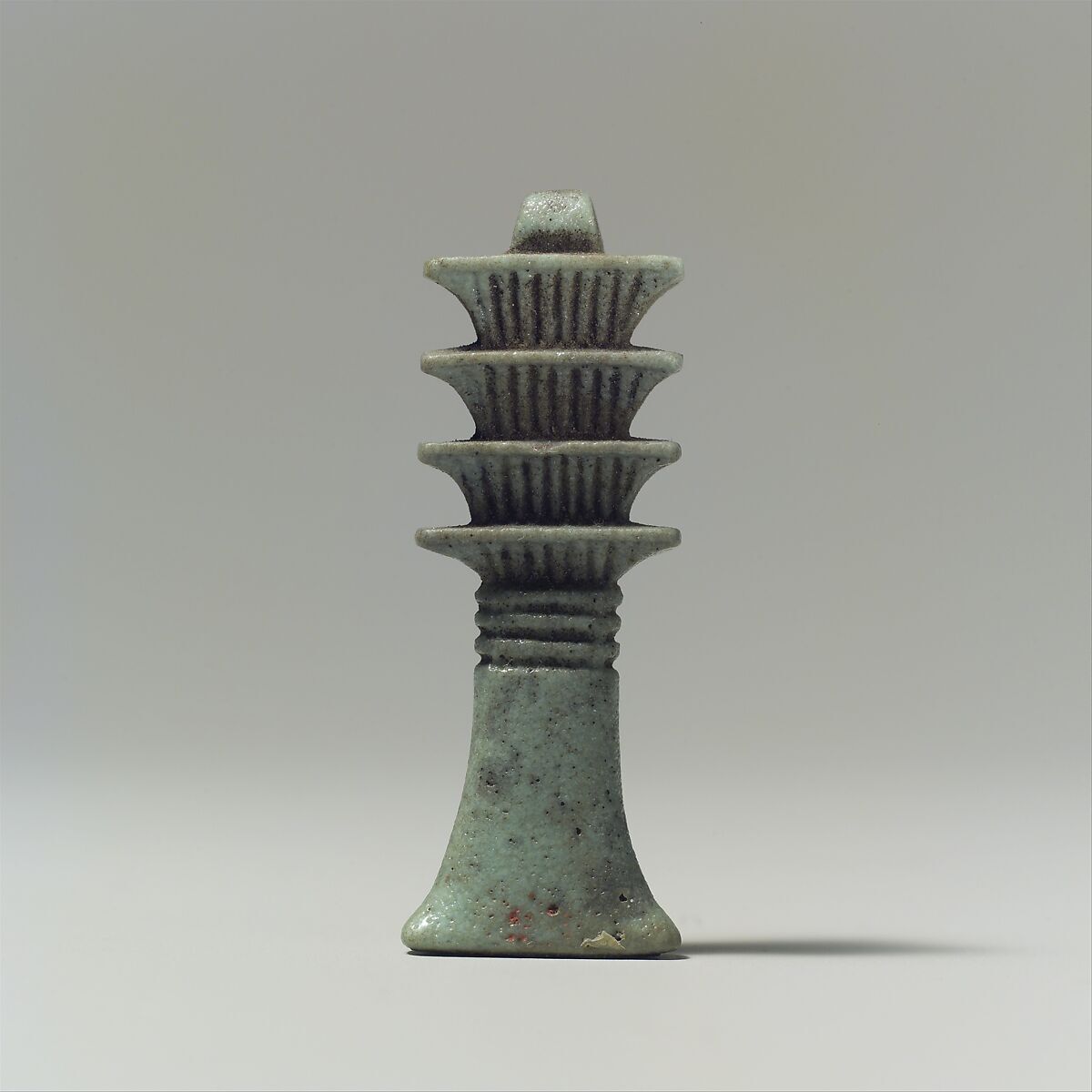
Today, the Djed symbol isn’t as widely used in contemporary art or religious symbolism as its simple pillar shape doesn’t seem to spark most artists’ imagination. This is normal for such especially old and straightforward symbols. After all, pillar shapes have been used to symbolize stability in most ancient cultures and mythologies.
This doesn’t need to be held against the Djed symbol. It can easily be seen as its benefit – with such a universal meaning, the Djed is one of those symbols that can easily be translated from one culture to another. Plus, the horizontal linear ornaments at the top do give it a pretty distinguishable look compared to other pillar symbols.
As a result, the Djed can make for a fascinating jewelry piece such as an earring or a pendant, as well as a clothing ornament. It’s sometimes used in pendants, on charms, as earrings or as a decorative motif on various items.
Wrapping Up
Although not as popular today as it used to be, the djed is an important and respected symbol in Egypt. It’s meaning is universal and can be applied to any culture or faith. While it initially represented stability, strength, durability, and was associated with the concept of resurrection, over time, it became a symbol of the pharaoh’s power, signifying his or her role as the axis or backbone of the nation, providing stability and continuity.
Related articles
Osiris – Egyptian God of Life, Death and Resurrection
The Osiris Myth – And How it Changed Egyptian Mythology
The Ba: Ancient Egypt’s Symbol of Soul and Immortality
Duat: Egyptian Underworld and Realm of the Dead
Horus – Falcon God in Egyptian Mythology







